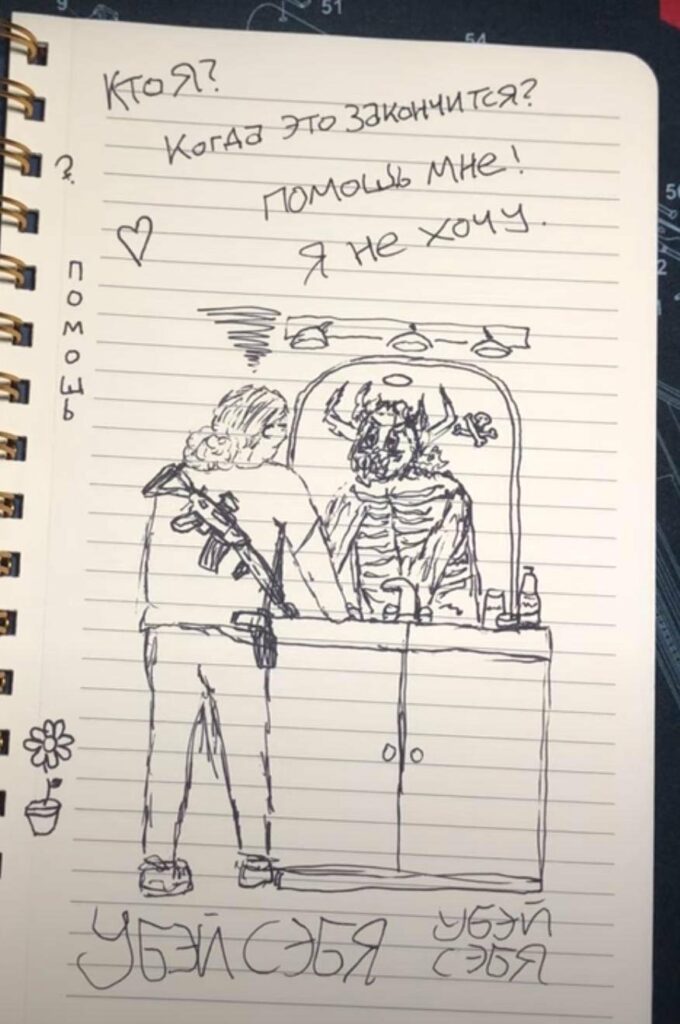Above are Fletcher Merkel, 8, and Harper Moyski, 10, both of whom died in the opening-Mass killing that took place in a Minneapolis Catholic school on 27 August 2025.
Last week, I put on X: “Someone asked on my Substack article if the kids shot in MN could be martyrs. I replied: ‘At first I thought not, but it does seem to be at least two deaths in odium fidei, which means in hatred of the faith. We know this from the killer’s stated motives. So yes, it’s very likely they are martyrs.'”
As could be expected, I got some push-back from traditional Catholics who did not believe they could be considered martyrs by traditional standards. Was this only because they didn’t die at the TLM? My trad opponents denied such a straw-man argument. Fair-enough.
Others who supported me pointed to the Holy Innocents, insofar as they were considered martyrs without granting explicit consent (at least none recorded in Scripture.) However, my trad-opponents here called them “a special case.” Fair-enough (but hardly a theological reason.)
One person wrote me about the Minnesota children: “They’d have to first know they were being killed for their faith and assert that they’d rather die for Jesus than to live and deny him.”
That is a thoughtful reply, but as we will see, it’s doctrinally and historically inaccurate. A gentleman named Drew Sill then quoted St. Thomas Aquinas under my FB post with these words:
“I answer that, The merit of an act depends on its object and end. Now the object of martyrdom is the good of faith or some other Christian virtue for which a man suffers; and its end is the glory of God. Wherefore, if a man suffers death for the faith or for any virtue connected with the faith, his act is meritorious, not only by reason of the habit of charity, but also by reason of the act itself, provided it be done with a right intention.”—Summa Theologiae II-II, Q. 124, A. 5.
Of course, this leads to the question: What exactly is “the right intention” in martyrdom? Does the martyr just before his death need to come up to the killer and tell him he believes in Jesus just before he pulls the trigger for it to be considered a real martyrdom? Or could the “right intention” be something as simple as attending Holy Mass without knowing what violence is coming up?
Clearly, no Catholic today in his right mind would dare say all the martyrs of history had to be great theologians in order to be considered martyrs.
The Roman Martyrology is one of the few documents in the Catholic Church that is considered to be absolutely authoritative without being infallible itself. Every day contains about 20 martyrs that died on that day of the year and each martyr gets about one sentence. These martyrs have been not only canonized by old-school Popes, but even the Roman Martyrology itself is considered to be the official roll-call of the ancient athletes of Christ.
We traditional priests pause during the third (Prime) of our eight canonical hours of Psalms in the Roman Breviary every day for about 1-2 minutes to anticipate the next day’s roll-call of saints and martyrs in the Roman Martyrology. (For example, in the Divine Office on 31 August, I recently paused Prime to read the martyrs who died on 1 September.) In doing this, I learn a lot not only about the martyrs, but also about the mind of the Catholic Church.
One such example in the Roman Martyrology on the 5th of April every year contains these saints: “In Africa, the holy martyrs, who, in the persecution of the Arian king Genseric, were murdered in the Church on Easter day. The lector, whilst singing Alleluia at the stand, was pierced through the throat with an arrow.”
Notice what is being asserted here in the early Church in Africa. A lector could not sing the Gospel (for that was the job of the deacon, priest or bishop.) Nor could a lector ever be a woman in the early Church of West or East. Therefore, we know the lector was a man of the minor-orders. Indeed, he was allowed to sing the Gradual and the Alleluia before the Gospel. What happened to him while doing this? While singing the alleluia at the stand (pulpit or ambo) an enemy of Christ came into the Church and shot him through the throat with an arrow.
Did that martyr-lector have a chance to protest this act? No. Did the lector have a chance to say something snarky to the Arian archer? No. Did the lector say something pious to the murderer with the bow and arrow? No. So, clearly, the definitive Roman Martyrology is making it clear that someone who attends Mass and is then killed (regardless of verbal consent or even resistance) is to be enrolled in the Roman list of martyrs.
Doubtless, someone will now retort: “Yes, the Roman Church can name them as martyrs, but not Fr. David.” It’s again a fair point. But the early Church allowed the faithful to consider all martyrs as true saints even before their official canonization provided they die in odium fidei, which again means “in hatred of the faith.”
So, the only way to detect if Fletcher Merkel (8yo) and Harper Moyski (10yo) died in odium fidei is not to ask their parents how much of Fr. David’s “Roman Catechism of Trent” podcast they had memorized before their death. Rather, the above teaching from St. Thomas Aquinas and the Roman Martyrology makes it abundantly clear: Simply attending Mass grants all killed-attendants the benefit of the doubt in regards to the gift of martyrdom, provided they had not shown signs of heresy before their death.
Because these were children within the age of reason, the only traditional appraisal of true Catholic martyrdom would be to study the motives of the actual killer who entered a Mass to kill people. Was Westman just crazy or did he act in hatred of the Catholic faith? We need only study his killing preparation-videos for the answer to that:



The last of these pictures is obviously a drawing of Christ Our Lord crowned with thorns. The shooter, Westman, turned that image into his target practice with this rifles and pistols before his child-killing rampage at Holy Mass (and subsequent suicide.) Below the image it reads: “He came to pay a debt He didn’t owe/ Because we owed a debt we couldn’t pay.”
The evidence from the killer himself is overwhelming that the children died at Holy Mass in odium fidei.
